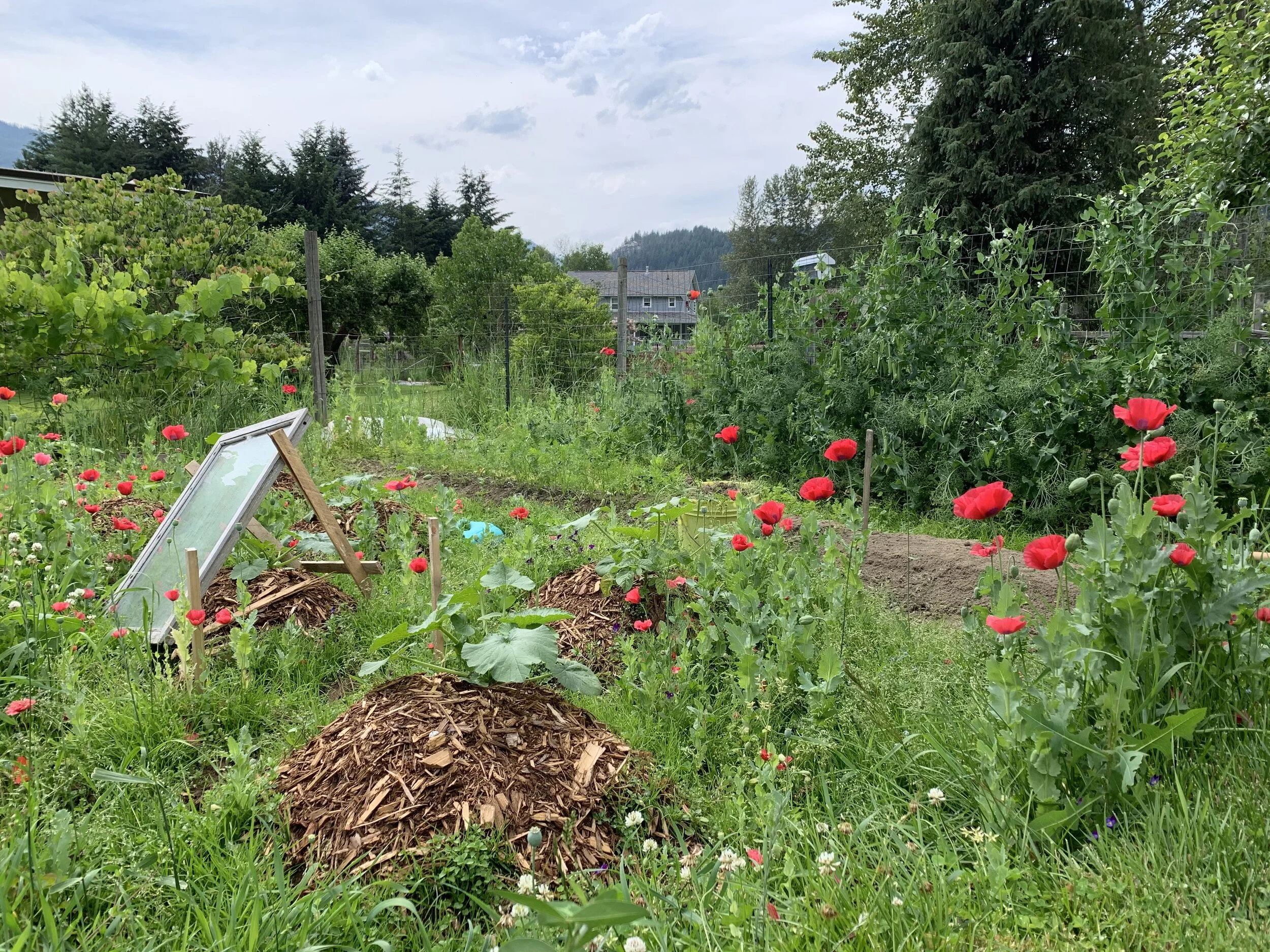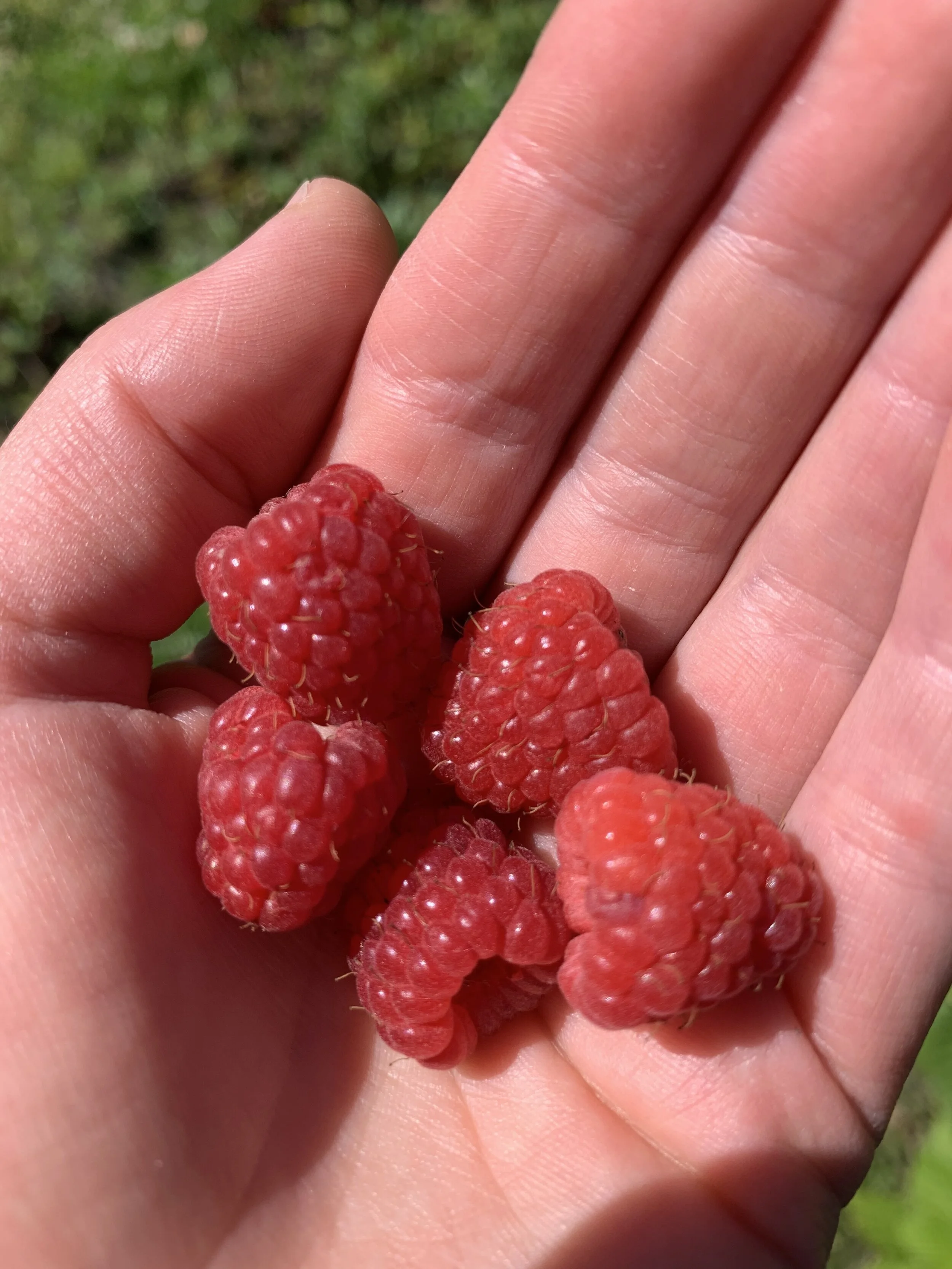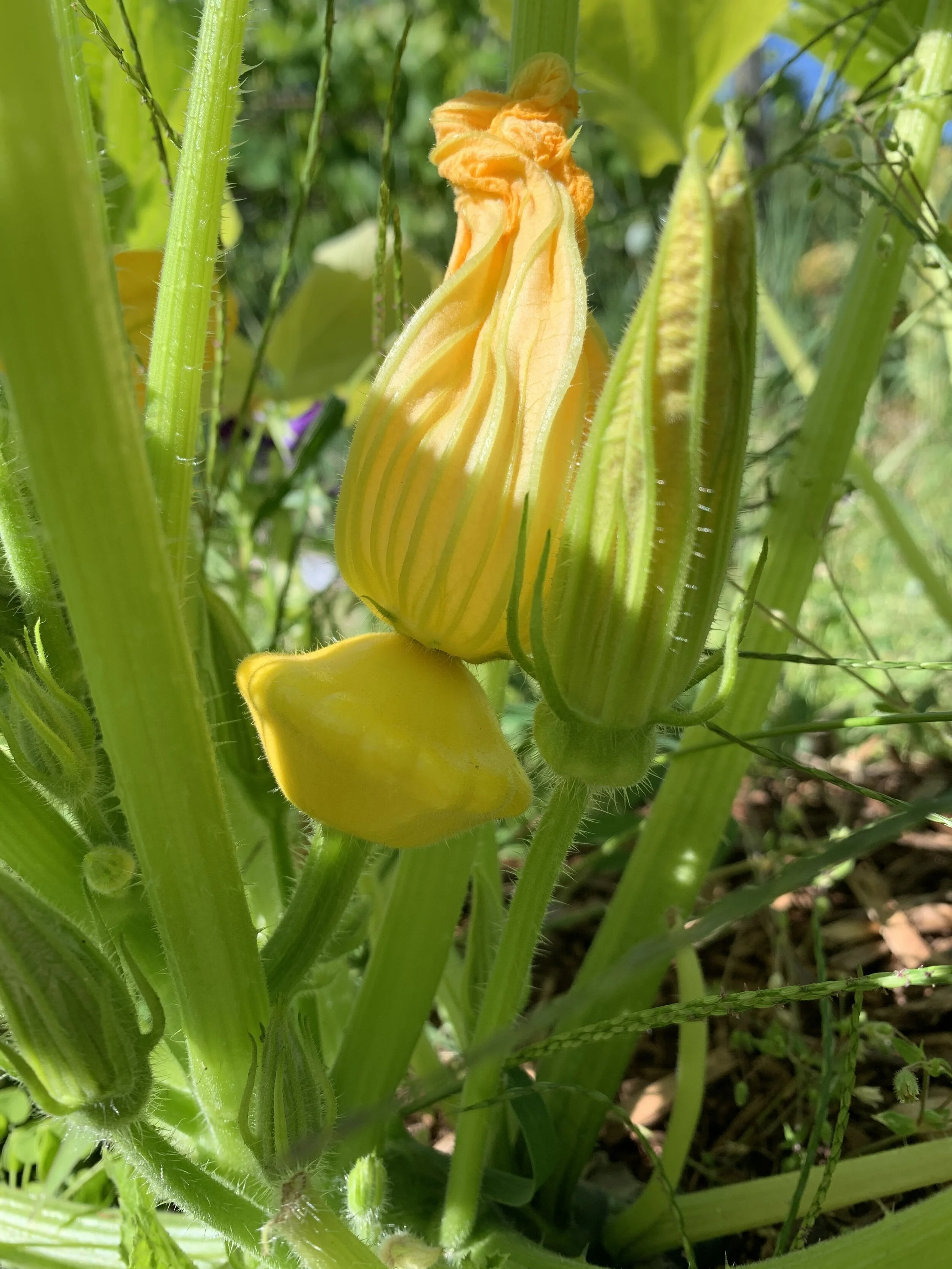Up until this year, my relationship with vegetables has begun at the grocery store. I want kale. I buy kale. I eat kale. We had a flower garden growing up, and a rhubarb patch in the back, but that’s about it.
Then I met a Kootenay man, born and raised. We moved in together and low and behold…I garden now. And by golly: I love it! Who knew something so simple could bring you such joy! It was a busy spring, but we managed to sow seeds for a big garden in the same plot that the previous owners had used. We planted potatoes, cabbage, beets, kale, peas, carrots, and all sorts of squash. I’ve really enjoyed watching the veggies grow and learning about all the plants. Plus, spending time weeding lets me sit in the dirt and acts as a sort of meditative practise.
The squash sprouting up from amidst the weeds, with a backdrop of peas and carrots.
Then, I got my garden soil tested.
While getting our septic system inspected it was pointed out to us that our garden sat directly overtop of the septic field. D’oh! How could I be so stupid! I had been shown where our septic field was located while inspecting the house a mere 6 months ago. I was so excited about having a garden that I didn’t even consider where it was located. We made the common and critical error of acting first before critically thinking about our actions.
I got thinking: if it were just human waste going down our pipes that would probably be fine…but what about all the soaps and detergents!? Sure, I use the greenest products I can find, but what about the previous owners. This septic has been in place since 1992, before natural alternatives were common place on the shelves. How many loads of tide have been pumped into the ground!? How many CLR treatments of the bathroom!? Panic set in.
I decided to test my garden soil.
It was pretty easy to get the test done thanks to my friend Andres who runs a fertilizer company. He included my sample with his regular shipment to A & L labs and two weeks later the results were in.
The heavy metals test results for our garden, affectionately named “flushing meadows”.
The Verdict
When you get lab tests back from the doctor, they come with reference ranges and an indication of whether the result is high, low or normal. Unfortunately for me, soil tests do not come in this easy to interpret format. The best I could find from the lab was a range of common concentrations in “natural soil” as well as an average value. On the same reference, they say that if your result is “significantly” higher than the average, you ought to investigate further. There is of course, no indication of what value would be considered “significantly higher”, though.
Of all the metals tested in my garden, three of them are higher than the average values provided by the laboratory:
Lead:
Average value: 10 mcg/g
My result: 53 mcg/g (5 times higher than the average)
Cadmium:
Average value: 0.06 mcg/g
My result: 1.38 mcg/g (23 times higher than the average)
Zinc:
Average value: 50 mcg/g
My result: 168.75 mcg/g (3 times higher than the average)
Of the three metals tested, zinc is the least concerning to me. Zinc is an important micronutrient, so it is nice to see that there is likely lots of it in my veggies. As far as I can tell, toxic levels of zinc cause the plants to produce a poor yield and that’s about it.
A beautiful big beet basking in my lead contaminated soil. :(
Lead however, is toxic to humans, both with long term low level exposure and acute high levels. It can damage many body systems including the kidneys, nervous, reproductive and endocrine systems. According to a publication from the University of California Agriculture and Natural Resources, lead concentrations in soil are often directly related to their distance from highly travelled roads (leaded gasoline wasn’t banned in Canada until 1990!), especially those in industrial areas, and older buildings painted with lead-based paints. Other sources of lead are the disposal of scrap metals containing lead and lead-acid batteries.
Hmmm. I live very near a busy industrially trafficked road in an area that used to have a thriving jam production industry, downstream from a pulp mill.
Okay, so there is lead in my soil, and it’s not dramatically high, but still unsettling. How do I get exposed to it through gardening?
According to this same resource, the most likely exposure to lead in soil comes from soil dust. This can either be consumed as dust clinging to unwashed vegetables, or inhaled as dirt is turned up outside, or inside after being tracked in on shoes. **Thinks in horror back to the days spent weeding the garden and shaking dirt everywhere. Secondary to the leaded soil dust, is the consumption of plant tissue containing lead. According to this same resource, lead is taken up into plants in different levels depending on a variety of factors of the soil like presence of organic matter, temperature and acidity. Of the lead that DOES get into the plant, most of it is concentrated in the roots, then the leaves. They advise against eating leafy vegetables (something I read while scarfing down a giant salad bowl filled with kale and beet greens!!) or root/tuber crops like carrots, beets and potatoes (drat! The beets are just now getting big and plump looking!).
Cadmium is not a metal I am particularly familiar with. Luckily, this document from Cornell University gives an overview of Cadmium, as well as some other metals that are commonly found in gardens. Cadmium is a known carcinogen, and can pose a threat if a person is exposed to low levels over time, similar to the case with lead. It is a common impurity in the zinc plating found on galvanized steel. It’s also commonly found in coal burning emissions and some fertilizers. Compared to lead, it appears to be much more soluble and available to plants in the soil, which is bad news for a gardener! And you guessed it: preferentially taken up by leafy greens! Dang it!
What now!?
It’s hard not to look at my veggies in this way now.
So finding high levels of heavy metals in my garden is not awesome. But I can still enjoy the garden this year with some modifications. We will no longer be harvesting the green leafy veggies or the root crops. My heart breaks for all the delicious carrots and beets I will be missing out on! Next year we will either move our garden to another area in the yard (if the soil samples come back clean), or move entirely to a raised bed system with imported top soil.
There are some silver linings from all of this though:
no more weeding the garden this year (yay!!)
we found the problem early in our gardening journey. We’ll be here enjoying the beautiful growing conditions of the West Kootenays for years to come and aside from this first few months, it will be a healthy addition to our lifestyle.
According to my research, it seems most fruits and fruits masquerading as veggies (I see you tomatoes and cucumbers!) are safe even in lead contaminated soil as long as they are washed well before eating. And conveniently they are just ripening now!
If we move to a raised bed system, my back will be saved!
A handful of raspberries straight from the garden! Yummmmm.
Today I learned that squashes grow little spikes all over them! They must all be rubbed off by the time they get to the grocery store. Cool!
Takeaways:
Even activities that seem wholesome and safe, like letting your kids play in the dirt and growing a home garden, can be dangerous if we fail to consider the unfortunate contamination of our environment. Environmental standards have come a long way, but sadly our past mistakes can haunt us for a long time.
If you plan to have a garden, get your soil tested, BEFORE planting to avoid any unnecessary heartache. If heavy metals are a concern, make sure you plant non-edibles as a coverage crop to avoid tracking them into the house, and use a raised bed garden system with non-contaminated soil, especially for your greens and roots. If you’re tight on money, look out for programs like this one in Trail, BC that promote healthy environments and may provide soil testing and replacement at no cost to you.
Stay safe out there friends!
——————————————
Enjoy this article? Be sure to subscribe to my e-mail list for content delivered directly to your inbox. You can also follow me on instagram and facebook @kalliofunctionalpharmacy. To reach me for other inquiries, use the contact form found on my website.






